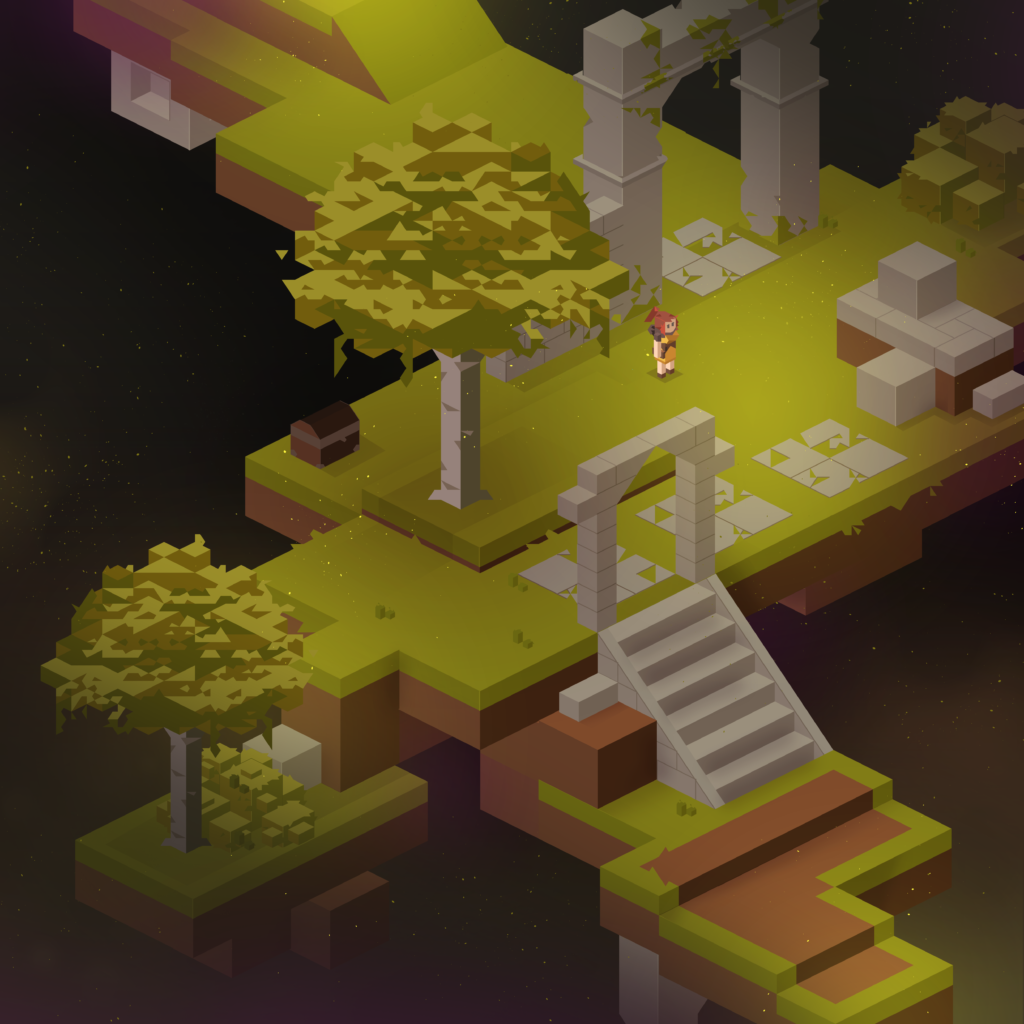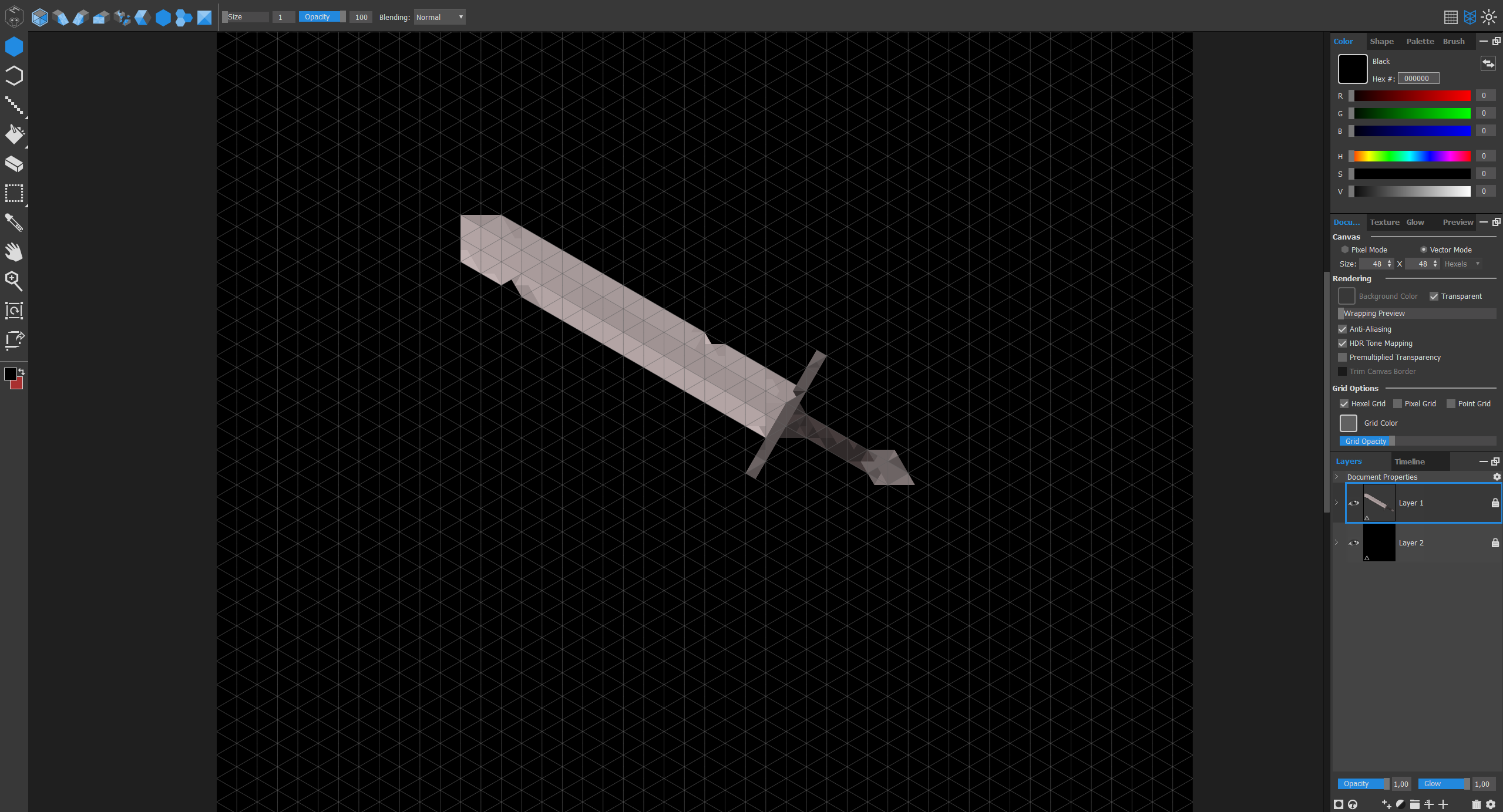Trixel art is a very interesting and innovative art style. I believe everyone is familiar with pixel art — those little square graphics from 2D games that are quite popular. What sets trixel art apart is that it’s created using triangles and hexagons instead of squares, like in pixel art.
This unique style gives players the nostalgic feeling of retro games while also pleasing the eye with a more modern and geometric look. We chose this style precisely to make it a core element of Espada’s visual identity, enhancing the immersive experience.
To achieve that, we use the best software on the market: Marmoset Hexels 3, a tool with a simple and intuitive interface that allows us to create almost all the game’s assets. Even the environments are made with it — we build them in 2D with an isometric view, creating a sense of depth without having to model in 3D.

(from the game's early version, just a test)
Since nearly all design in Espada is constructed using trixel blocks, every element has a unique visual rhythm, with precise angles and elegant compositions. This results in a consistent aesthetic that blends the nostalgia of old-school RPGs with the energy of modern productions.
The characters are also designed using the same geometric principles, but with a focus on visual identity and clarity. Even with simple shapes, the characters are easy to recognize, control, and animate. The aesthetic contributes to the game's tone: charming, accessible, and with a handcrafted feel.
During the creative process, we faced some challenges, such as adapting shadows, showing character expressions, or simulating depth with limited color palettes. However, these challenges made the process interesting and rewarding. We believe that this will reflect positively in the final quality, since the visual style isn’t just “pretty” — it actively contributes to the gameplay’s pacing and readability.
Visual elements are used to guide the player through the story, highlighting contrasts between safe zones and danger zones, for example. The style also helps set the emotional tone for each moment in the game — whether nostalgic, adventurous, mysterious, or cozy.
In short, Espada is being built in trixel art because we want to connect tradition and innovation. Hexels 3 reinforces our artistic vision, blending visual accessibility with geometric sophistication. It invites players to pay attention to the details — every triangle, line, and shadow is part of an enchanting visual narrative in the world of Espada.
